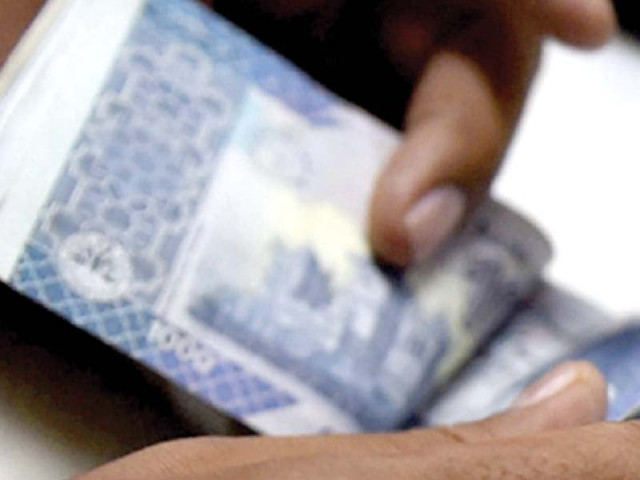Rupee hits 5-month low in inter-bank market
Closes at Rs159.33 against greenback due to rising import payments

Pakistani rupee hit a five-month low of Rs159.33 against the US dollar in the inter-bank market on Thursday in the wake of renewed demand for the greenback for import payments and debt repayments, according to dealers.
With a fresh drop of Rs0.41, the Pakistani currency has cumulatively depreciated by Rs7.06 (or 4.63%) since touching the 23-month high of Rs152.27 against the greenback at close of trading on May 7, showed data of the State Bank of Pakistan (SBP).
“The rupee may drop to Rs160 or more against the US dollar within a week,” projected Exchange Companies Association of Pakistan (ECAP) President Malik Bostan while talking to The Express Tribune.
The local currency, however, might not stay there for long because it was expected to recover owing to anticipated strong inflows of workers’ remittances from overseas Pakistanis ahead of Eidul Azha (falling in the second half of July), he said.
Moreover, a consistent increase in investments through the Roshan Digital Account (RDA) by the non-resident Pakistanis would also provide support for the rupee, he said.
In the long run, China’s international trade through Pakistan’s territory – China-Pakistan Economic Corridor (CPEC) – is estimated to generate $10 billion a year for the national economy.
“This will open a new avenue for Pakistan to earn foreign income and help strengthen the rupee against a basket of foreign currencies,” he said.
At present, he pointed out, import payments and foreign debt repayments are the two largest sources generating significant demand for the US dollar and weakening the rupee.
The import bill has been on the rise since December 2020. It hit an all-time high of $6.28 billion in June.
“Imports are estimated to remain high amid government’s pro-growth policies. The economy largely depends on imports,” he said.
Moreover, the country is expected to repay billions of dollars in foreign debt annually.
“The amount is not extraordinary because we have resources to generate a larger amount through conventional and unconventional remittances and additional earnings from trade through CPEC,” he said.
Bostan said that the delay in International Monetary Fund’s (IMF) sixth review of Pakistan’s economy till September and Financial Action Task Force’s (FATF) decision to keep Pakistan in its grey list were mounting pressure on the rupee.
He pointed that the international crude oil benchmark, West Texas Intermediate (WTI), hit a three-year high of around $75 a barrel a day ago. “Pakistan heavily relies on imported energy, hence the rise in oil prices also played on minds of buyers and sellers of foreign currencies in the inter-bank market,” he said.
In coming months, the gradual resumption of international travel may also generate additional demand for the US dollar in Pakistan, he said.
Published in The Express Tribune, July 9th, 2021.
Like Business on Facebook, follow @TribuneBiz on Twitter to stay informed and join in the conversation.



















COMMENTS
Comments are moderated and generally will be posted if they are on-topic and not abusive.
For more information, please see our Comments FAQ